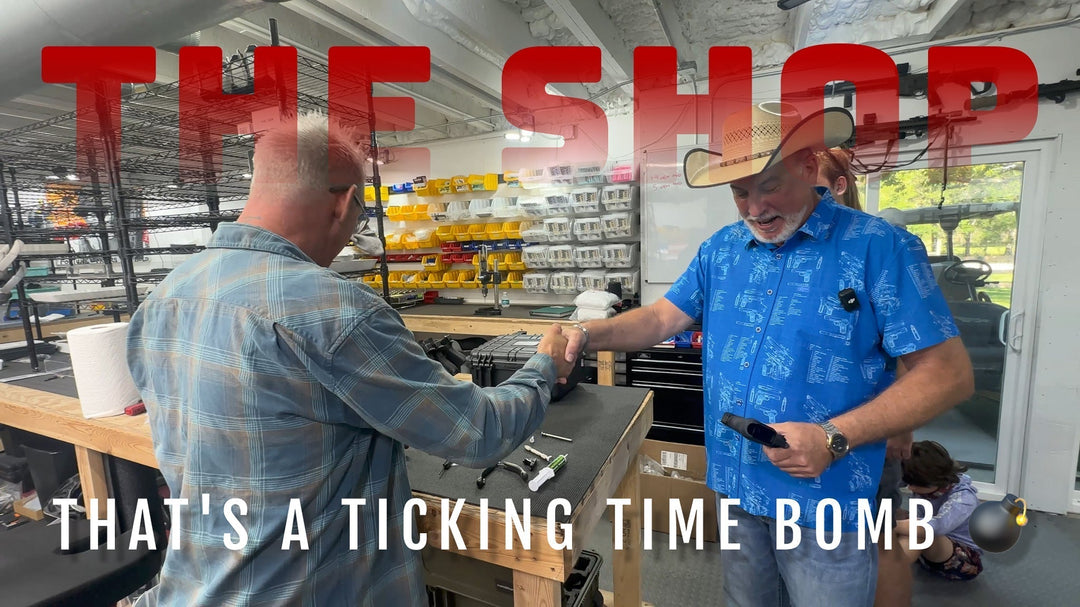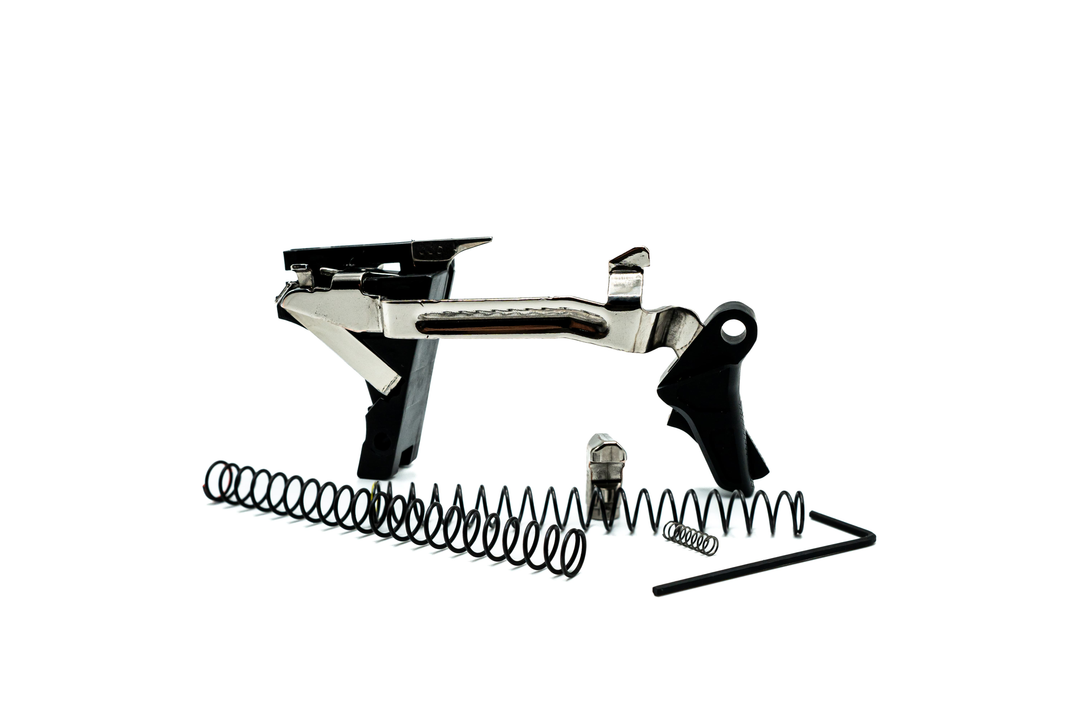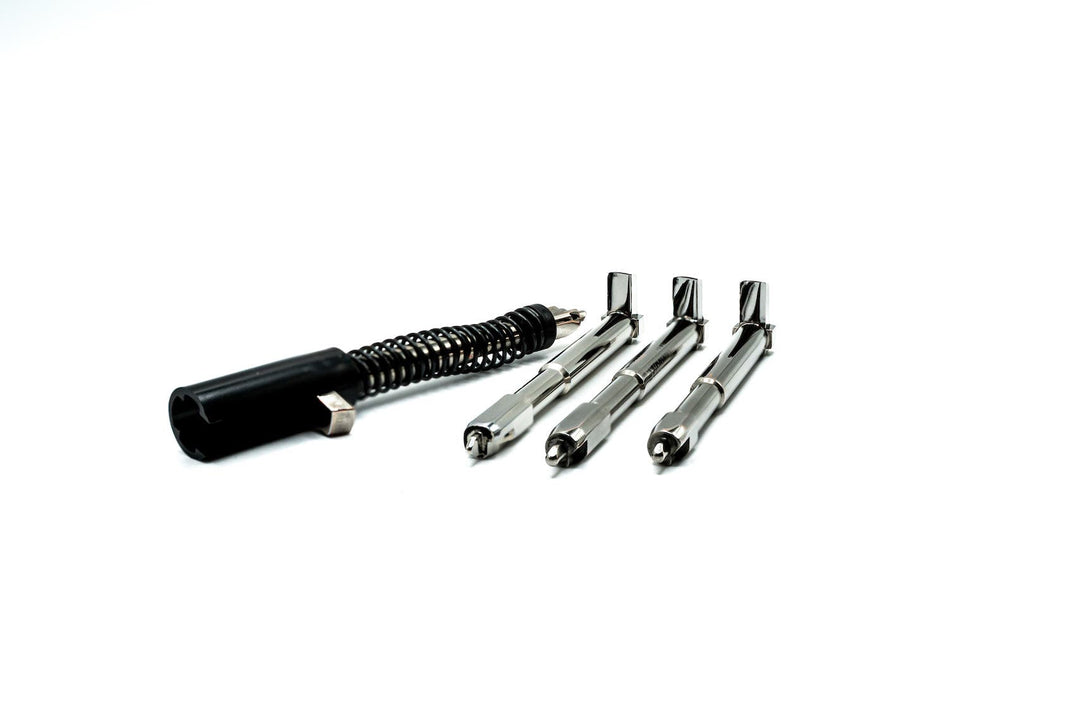Glock Striker and Sear Engagement EDUCATIONAL ONLY
TRANSCRIPT | Video Link
So basically you know, when some people that are new at this try to you know, get less travel or they really want to try to achieve that 1911 feel. Which I want to say something about that right now. Like it's a Glock, you know, you're not going to get it to be 100% 1911 and they are two different systems and my opinion is like why would you want to do that anyway. A Glock is a Glock and a 1911 is a 1911. I like this platform for its merits, some people like the 1911 for its merits, but I think we should definitely keep one what it is and the other one, what it is.
Now that doesn't mean to say that you don't have to have a totally awesome trigger feel in both guns. But the matter is you're not going to, it's pressure. At the 1911 mechanism is just pressure, not travel that drops the hammer. In the striker fire system it's going to be travel that is moving the sear back far enough to get it to drop off the striker lug face. (1:10) So you just can't get away from those aspects of physics in this system. So you know, and the closer you do try and get it to a 1911, the more unsafe the gun can become unless you really, really, really know what you're doing. I mean, you have to really actually add polymer to the shelf here because what happens, is at the end of the day, when you bring it back so far, you're coming off of that shelf. This is your safety shelf right here that you're sitting on. And that's the crossbar right there sitting on the shelf.
When you get back here, if you can see that drops down into that lower shelf area, in order to get it to like a 1911, you have to bring it all the way back into that area, which means if you horizontally drop this gun, boom, it's going to fall off of the striker lug face, your sear is going to fall off. Which is not a good thing.
01:57
So basically what people tend to try to do is they take this angle and they, and you can see there's a definite angle at the very tip of that right there. And what they'll try to do is they'll try to take that probably 15, 20-degree angle away and make it completely flat. This is a little bit different. You can see where on there I have taken the actual tip away and that gives it a little, and you can see it, it's so minute. At the end of the day, it's just enough to still keep it engaged safely. Which this picture shows. It keeps it still engaged like this and you don't have to worry about it going off. Also with the Johnny Glocks, Johnny custom Glock system because I do, part of my proprietary deal is I take a little material off of the sear itself, shorten the sear. And then what that actually does is since it's kicks it up a little bit deeper into, when I say deeper, I mean it makes it go up into this area a little bit more. So when I do my manipulations to the bottom of this, you have more room to play with. You're not shaving it down to the point where you lose that. Glock allows, here's the picture right here. Glock allows a third. That's the exact picture. These are the exact things we're talking about right now. These engagements. When you look in the back of the gun right there and you can see that Striker.
04:05
So if you look in the back of this, which has a Johnny Beyond in it, you cannot see the striker. I mean you can, sorry, I'm sorry you cannot see the sear. But once we disengage the trigger, let me show you, its safety fire is on. Get anyone's feathers unruffled. That's a safe gun. System goes off. And that adds to a very confident trigger. When you're looking at sub three pounds, I mean, that is a light trigger. So if you're out there, you know, in games and you're competing and it's a, you know, it's high stress situation and you're going from stage to stage and you're drawing and you're reloading, you're putting back in holstering, un-holstering to have that solid engagement and to be very, very much, I'm trying to think of it like have a confident feel of this on that predictable wall. It really adds to just your overall confidence in your weapon and the way you're going to run that gun. Whereas some of the guns you just feel like you're going to touch it, blow on the dang thing's going to go off. That doesn't add to really go on from stage to stage and work in your games in a way that you know, you don't want to have to worry about your gun going off, especially when you have people to the right and left on all around you.
These are a couple of the other aspects of that I have seen. This is your 90 to 90. Back in the day when the actual transfer bar used to angle to the right a little bit a gentleman named Dale Rhea used to actually cut the striker lug face at 45 and then cut the sear at 45 as well.
This is another one that's popular right here where they kind of half moon. You see a lot of trigger guys do this tactic. You know that when you do self-defense triggers right there, they kind of half-moon the striker lug face. And we're looking at the, we're looking at it from this position right here.
06:08
So basically these are the cut lines right here where you're rounding the lug face right there. From the side when you're moving material, when you're removing material, it's right here. I am sorry. This is the same as this one right here. And then as you saw the pictures that I showed you, I took a little bit off the edge right here, but not enough to take us past this area. As far as the sear is concerned, a lot of people, this is like a 1911 trick right here where they actually take some material off of the 90 degree face of the Striker, which means this part right here, and I guess I should flip this to make it really coincide with this picture. Then remove material from here. And so it causes that to angle like this. So it's almost, and this is where you have to be careful because sometimes when the sear picks this back up, if this is angled and I'm making it a gross angle, by making it look like that, it will slide back and double tap, boom, boom. The system will just keep firing like that.
Whereas if you're like this, it's going to dead hit against it and you're not going to have to worry about it sliding back underneath and double tapping. So same thing with this angle. If you're going to take, you always want to work sparingly, you always want to do a couple of file movements and then move, throw it back on that gun and test it. It's a slow process and when you get it, you got it. And you can just, that trigger is just going to make you smile, you know, ear to ear because you nail it. And because the way the guns are designed in a kit form, I really can't do that. There's guys where I’ve sent them three different strikers and they try to work it and make it work. But at the end of the day, if you want that from me, the best thing to do is send your gun to me because that way I'm dealing with it. Even putting your magazine inside the gun is going to change the slide to frame fit and it might change a slide to frame fit enough that it becomes either an unsafe gun or double taps and things of that nature can happen.
08:43
So you really, really have to be at a level where you absolutely know this system through and through if you're going to be doing angles like this. Another one with that angle like that is when you round the sear face off. Another one is when you angle the sear face obliquely backwards. So you're actually still getting a 90 to 90 at this point like this when you're engaging, it's just the whole system is, has changed a little bit. It's called a negative neutral right there at that point. But these are just some of the different aspects, some of the different relationships of Striker to lug face, Striker lug face to sear that you know, you commonly see in the Glocks.
And for whatever end use you have; I think this is a good representation as some of the things you can do. Next what we're going to do is we're going to look at you know, with, and I have all, everything right here on the table, with the Dremel, the different types of files right here, from ceramic to diamond, the different types of polishes that you can use, different types of stones to achieve this type of work. And what that's going to look like.
10:08
So once again, it is Johnny from Johnny Custom Glocks. And this was just an informative video on the relationships. And next we're going to get into the video of actually how to do the work.
So thanks for viewing and the www.johnnyglocks.com is the website. And you can reach my Facebook and my YouTube from the tab feeds that are right there in the website. Thank you very much and have a good day.










